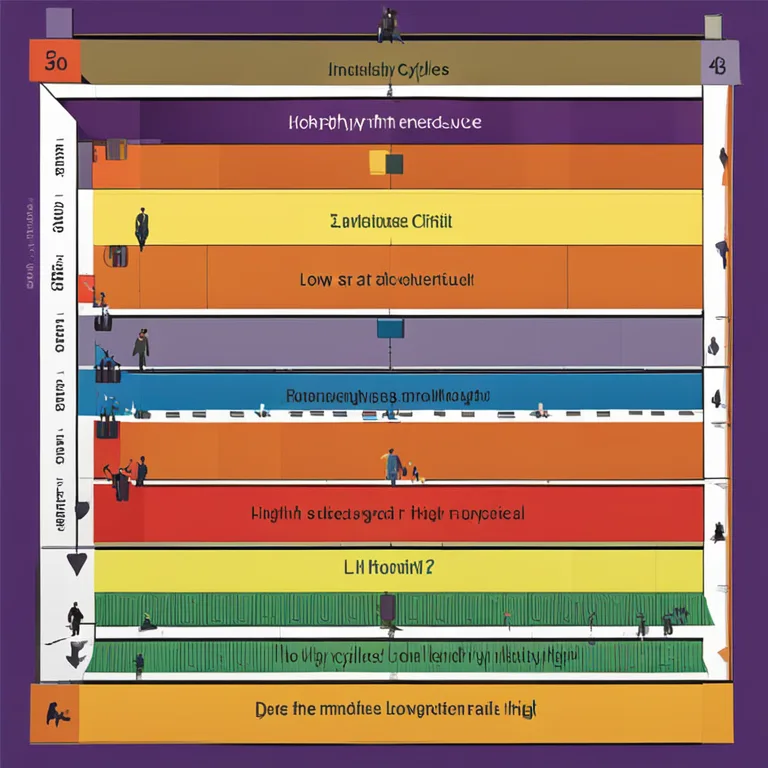
Measuring Your Biorhythms: A Step-by-Step Guide
Discover how to track and measure your biorhythms to better understand your physical, emotional, and intellectual cycles for optimal well-being.
article by Adrian Wallace
Introduction to Biorhythms
What exactly are biorhythms, and why might someone be interested in measuring them? Biorhythms are considered to be natural cycles that govern human life. These rhythms are believed to impact our physical, emotional, and intellectual abilities, suggesting that there are better days for specific activities. While the scientific community remains divided on their efficacy, biorhythm tracking continues to pique the interest of many seeking alignment with their natural patterns. In this article, we'll take you through the basics of biorhythms and how you can start measuring them right away.

Understanding the Three Cycles
The foundational premise of biorhythm theory is that there are three primary cycles: the Physical (23 days), Emotional (28 days), and Intellectual (33 days). Each cycle has a high, low, and critical phase. The high phase is indicative of greater performance, while the low suggests a time for recovery and caution. Critical days, when a cycle transitions from high to low or vice versa, are considered times of increased susceptibility to stress or accidents. Keeping track of these can potentially help you plan and make the most of the high phases.

Getting Started with Biorhythm Calculations
Measuring your biorhythms starts with calculating them. Traditionally, this involved complex charts and manual calculations, but with contemporary technological advancements, you can now easily find online calculators and dedicated apps for this purpose. These tools typically require only your birth date to generate your personal biorhythm chart. As your cycles are unique to you, starting with your birth date ensures that the calculations are personalized and relevant.

Interpreting Your Biorhythm Chart
Once you have your chart, it will display the ebb and flow of your three cycles over a period. Interpreting it is straightforward: look for the days when your cycles are peaking (high), at their lowest point (low), or crossing the baseline, which represents the critical phase of transition. This visual aid can help in planning activities; for instance, tackling important tasks on days when your intellectual cycle is high or being cautious with physical activities during the low phase of your physical cycle.

Utilizing Technology for Biorhythm Tracking
In 2024, desktop applications and smartphone apps offer more than simple biorhythm charts. They now integrate with wearable technology, harnessing real-time physiological data to provide more accurate and dynamic cycle predictions. Many of these tools also feature notifications and advice, macro-tracking for long-term cycle recognition, and even synchronization with digital calendars to alert you about your critical days in advance. When selecting an app or software, look for one that respects your privacy and data security.
Best Practices for Biorhythm Measurement
To get the most accurate measurement of your biorhythms, consistency is key. Ensure you update your data regularly, especially if your tool of choice uses physiological signals from wearables. Observing patterns over time is fundamental, as it can reveal personal trends and help in making lifestyle adjustments. While biorhythms can offer insights, remember to take a holistic approach to your well-being and consider other factors, such as diet, exercise, and mental health.
Published: 12/28/2023
Modified: 12/28/2023
More predictions
Come back here soon to learn more about yourself and your future


Biorhythms Compatibility Calculator: Synchronize Your Cycles
Discover how a biorhythms compatibility calculator can help you sync with your partner's innate cycles for an enhanced connection.


The Accuracy of Biorhythms: A Myth or Science?
Delve into the debate on the accuracy of biorhythms and discover whether they hold any scientific validity.